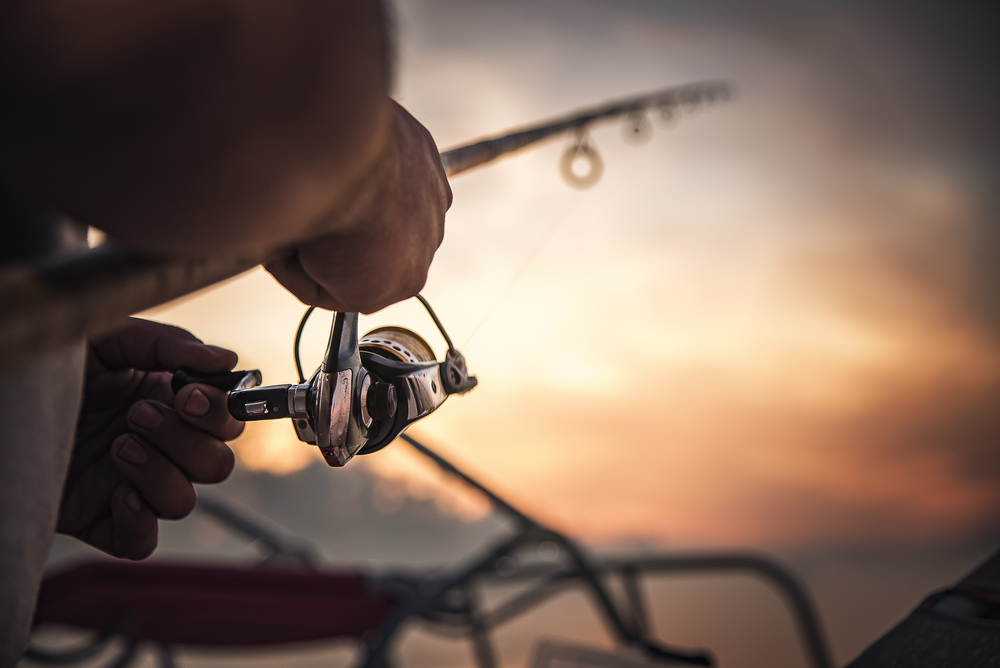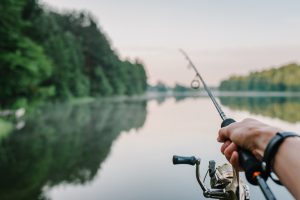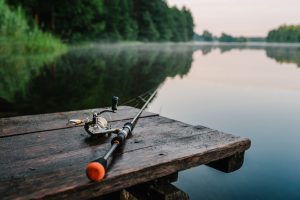
Millions of people all over the world engage in fishing. It is natural for you to wonder what the fuss is all about. After all, it does not make sense for people to spend hours fishing when they could go to the nearest fish market and buy the fish they want. The simple fact is that fishing can be a lot of fun and can also be an excellent bonding activity for the family. For some, it is a livelihood, others consider it a sport or engage in it as a hobby. If you have not fished people, fishing can come off as very confusing initially.
However, the truth is that fishing is not that hard. Like any other activity you do, it just needs a little bit of knowledge and preparation, along with the right gear. You will also come across the term ‘angling’, which is often used interchangeably with fishing. Angling is used to define a particular category of fishing where you use a line, hook, and fishing rod to catch fish. It is the most common type of fishing, and most beginners will engage in it. Meanwhile, the term fishing itself is a broad one, which refers to the act of catching fish, regardless of which method you use.

Fishing Types
When you have decided to learn fishing, the first thing to focus on is the different types you can engage in. Indeed, there are several fishing types, and they can be distinguished based on the techniques used, the species of fish, and the body of water, as well as the gear you use. Check out some of the common types of fishing below:
Freshwater fishing
Amongst the different recreational types of fishing, this one is the most common, particularly in people who do not live near or in a coastal area. This kind of fishing is done in rivers and lakes, and learning it is the easiest. Even though rivers, lakes, and ponds are smaller in size, they can still hold a wide array of fish sizes and species.
Beginners should consider starting with freshwater fishing, as you do not require a lot of hefty gear for it. Nonetheless, if you decide to engage in freshwater fishing, there are certain things you should know. It would be best if you chose the right time of the day and the year, such as fishing in the late evening or early morning in summers when the light is low.
Likewise, you should also be aware of the fish species found in the freshwater body because the combinations for bait and lure can vary according to the species. Lastly, if the freshwater has any vegetation like weeds, you need to fish near it because the fish like staying around covers.
Saltwater fishing
This is considered the most popular kind of commercial fishing. Saltwater makes up 97.5% of the world’s water body, so it is not surprising that most fishing activity occurs in the sea. However, recreational saltwater fishing is also done, and you do not have to have a boat for fishing in seawater. Sure, deep-sea fishing does require a vessel, but since it is not recommended for beginners, you do not need to worry about it just yet.
Beginners should stick to surf fishing or pier fishing because you need a minimum amount of experience and gear for engaging in these two categories of saltwater fishing. You can do pier fishing throughout the year but should check tidal activity. As for surf-fishing, you also need to be familiar with the currents as well as the tidal activity and should know the best time to fish in the day. Bear in mind that after saltwater fishing, you need to clean your gear because it can rust due to the salt.

Running water and Stillwater fishing
Running water and Stillwater are the two types of freshwater bodies you can find. Streams, rivers, and canals are running water bodies, while ponds, dams, and lakes are considered still. Stillwater fishing is comparatively calmer because there is no current or any such significant movement in the water, which makes it ideal for beginners.
Spin fishing and fly fishing
Instead of fishing types, these are fishing techniques. If you want to know the most straightforward technique, then spin fishing is your answer, as it can be used for catching different types of fish without a lot of effort. Fly fishing tends to be more challenging because it requires different kinds of baits and gear.
Lure fishing and bait fishing
These two types of fishing are also distinguished based on the method and are focused on what you decide to add to the hook. Lure fishing means you use insects, worms, or colorful plastic fish as artificial ‘baits’, whereas bait fishing involves living and real food for tempting the fish.

Steps to get started
After you have made up your mind about the kind of fishing you wish to engage in, it is time for you to figure out what steps you have to take to get started. You can take a look below:
Step 1: Apply for a fishing license
The first thing you need to start fishing is a license, depending on where you live. The steps and requirements may vary, but you do not have to worry because getting a license is fairly easy and inexpensive as well. You can apply for a license online these days or even obtain one at a fishing shop. It is recommended that you go for an annual license because this gives you the freedom to go fishing at any time during the year.
Step 2: Obtain the required gear
Things start getting interesting here because once you go shopping for fishing gear, you will discover just how much variety exists, which is aimed at making angling easier for everyone. However, an important thing to remember is that fishing gear available in the market is developed for catching specific categories of fish or for a particular fishing technique. Therefore, you first need to decide what kind of fish you want to catch and the method you want to use so that you can get the right gear accordingly.
As a beginner, you will need a fishing rod and a reel, and it is advised that you get a combo. This means the rod and reel are sold together, which makes setup easier. They are quite helpful, especially when you have casting issues initially because they can throw the lures further. If you get a spinning combo, it will become possible to skip the lures under the docks, piers, and even low-hanging bushes. The reel handle is usually swappable, so you can start fishing, regardless of whether you are right or left-handed. Plus, the spinning combo for reel and rod also helps in adjusting the drag if the fish puts up a fight.
Step 3: Understand the lures and tackles
Similar to rods and reels, you will find thousands of options when you begin looking for lures in the market. The key is to remember that these are also designed for attracting different kinds of fish, depending on specific conditions. Nevertheless, when you are a beginner, it is best to get live bait, such as worms. After you have become comfortable with live bait, you can then switch to lures that can attract the fish’s attention because they resemble smaller baitfish.
Some of the other things you will require include a tackle box, which is aimed at keeping all the fishing paraphernalia properly organized. It would help if you also had bobbers that are small balls for floating on the water. These sink when any fish hits your lure, thereby alerting you about the presence of fish. A net, particularly a rubber one, is needed to haul the fish out after you are done reeling them in. Next, you need needle-nose pliers for retrieving the lures and hooks from the mouth of the fish you have caught.
It is essential to remember that these items will not be just one-time purchases, especially if you intend to fish regularly. But, you don’t have to stress about these purchases because they are meant to help you get started, and you can upgrade them later once you have more experience under your belt.
Step 4: Know what casting is
The simplicity or complexity of your fishing experience depends on you. You can stand on a riverbank or a calm lake for fishing or go offshore for miles to catch a big fish. For beginners, it is recommended that you opt for the shores of a river or even a calm lake when you have to familiarize yourself with casting. This skill is something everyone who wants to fish has to master because it enables you to throw the lure or bait close to the fish’s location as much as possible.
Having a spinning reel can be helpful during the casting process for a beginner. You can start by ensuring that the end of the rod has at least six inches of line and make sure the reel stays below the dominant hand. The line stays in place thanks to the bail the spinning reel has, and it needs to be flipped while your finger holds the line. The rod tip now needs to be brought up slowly, and the rod should be cast forward using your elbow and wrist. This will propel the lure towards the fish you have targeted. Once the lure is in the water, you should flip back the bail and begin reeling for attracting the fish.
Now is the time to hook a fish, but you need to ensure that the fish does not spit out the lure, and the line should not break because the fish would go free. How can you prevent this? Setting the hook properly is one way to go about it, and the rod tip should also be held up. This ensures the fish gets hooked properly and does not go free. Furthermore, you can ‘play’ with the fish once it is hooked because this will tire it out, so it will not fight and break the line, which can and does happen.
Step 5: Land the fish
Have you followed the aforementioned steps correctly? If you have, you only have to keep the line taut and then reel in the fish. The rubber net will be useful here because you can use it to scoop the fish out from the water. It is tempting to grab it with your hand, but remember that fish is a bit scaly and slippery, and you might lose it this way.

How to Locate the Fish
After you have learned the basics of fishing, you now need to see how you can locate the fish. It can be extremely frustrating to go fishing and not be able to catch anything because you did not go to the right place. You can use a Fishfinder to help you out because this radar is designed for finding fish. Put it simply, these are devices that you attach to a line and throw into the water. This provides you with the location and display of the fish. You can use it for locating the best fishing spots, i.e., where the fish density is highest. This increases the chances of you being able to catch some fish. Seasoned anglers may not require a Fishfinder because they are familiar with the weather patterns and the body of water, but beginners can find it immensely useful.
Fishing Etiquette
Yes, there are some etiquettes involved with fishing as well, and you need to be aware of them. To begin with, you should avoid crowding other anglers who may also be present. Make sure there is ample room between you and the others because you do not want tangled lines. The early bird does get the worm, so you should respect the anglers who have arrived ahead of you. Lastly, have some respect for the environment and do not make a mess. Leave everything clean when you are done.
Follow this guide, and you will be able to master the valuable skill of fishing in a fun way.






